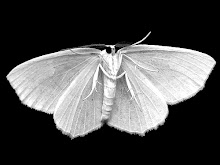
Throughout the years, I've seen B. B. King performing live mostly through either television shows or, in the more recent years, footage of live concerts diffused via Internet. I could gradually see him transitioning from playing mostly standing, to sometimes sitting, then finally to sitting most of the time, as he slowly conceded to the demands of his fight against diabetes and, as a boy from 1925, to those of his age. A few features of his appearances, however, never changed: the sweetness of his guitar riffs and solos, the intense spark of joy emanated from his charismatic stage attitude and the power of his inspiration over his public.
I always admired that B. B. King was still that active and inspiring after so many years on the road. This week, I was finally able to unveil some of the secrets behind the longevity of this man and his music. The insight came after watching another documentary from a series about The Blues, organized by Martin Scorsese. This time, in the film "The Road to Memphis", director Richard Pearce reconstructs the life threads of "second-generation" Bluesmen B. B. King, Rosco Gordon, Ike Turner, Bobby Rush and others, using as a focal point for their lives a concert they gave in Memphis for the Handy Awards, in 2002.
Pearce interweaves the individual threads of the Bluesmen onto a fabric that he unfolds to reveal several layers of musical history, which is also shown to reflect the history of American society itself. But the human dimension that the director is able to extract from his main characters, and their life on the road from town to town, and, finally, back to Memphis where thing all began, is to me what stands out most from the film. And that is where the secrets are revealed about the incredible longevity shared by all these Bluesmen at the time of footage (sadly, Rosco Gordon and Ike Turner are now deceased).
First, Pearce shows how these men grew out of poverty and oblivion to become immortalized through their music, because of their determination to change their world without having to sell their souls to the devil, like their predecessor founding fathers of The Blues -- many of whom died quite young -- were forced to do, due to the circumstances of the cotton fields. This determination, and persistence in not letting a light at the end of a very dark tunnel be extinguished, gave them a deep meaning to life.
Second, through the Blues, B. B. King and his mates were given the opportunity to form a fraternity, which opened a huge umbrella for all Black Americans to "freely" exercise their culture. Pearce's film shows that his main characters were on the center of this fraternity, which resonated loudly throughout the entire community. In between the lines, the film suggests that one of the main foundations of their "movement" was a strong camaraderie, and a generally non-violent kindness which reflected the attitude of their main source of inspiration and leading voice, Martin Luther King. Such ethos centered on camaraderie gave these men a deep sense of engagement.
Finally, BB King and his mates found in the Blues music the perfect environment to have fun. Fun which the film pictures as a contagious pleasure that the Bluesmen have had and shared selflessly with the public since starting their musical careers, some five decades ago.
At the end of the film, I was amazed to see how much its narrative unveiled, through the lives and achievements of B. B. King's "fraternity", some of the more fundamental concepts underlying recent scientific inquiries on the factors that make people believe their life is worth living. In fact, meaning, engagement and pleasure, which form the strongest threads of Pearce's narrative line, are also the three strongest indicators of the perception a person has of its own well-being. The interplay of such indicators, and their consequences to a person's mental health, satisfaction with personal and professional lives, and even longevity, are explored in works such as the paper "Three Ways to Happiness: Pleasure, Engagement and Meaning", in books such as Mihaly Csikszentmihalyi's "Flow", Viktor Frankl's "Man's Search for Meaning", and, more generally, in some of the fundamental paradigms of the recent science of Positive Psychology.
The high levels of meaning, engagement and pleasure achieved the Bluesmen in Pearce's "The Road to Memphis", are consistent with those achieved by other, "ordinary" people like us, who were not only very successful, but also inspiring to their peers, and able to live very long and healthy lives. Such cases are vastly reported in compilations gathering recent Positive Psychology investigations.
All this seems a strong enough call to get out there now and do something constructive for our lives. Perhaps such an attitude would lead us not only to the secrets of B. B. King's longevity, but also to those of a life better worth living.

